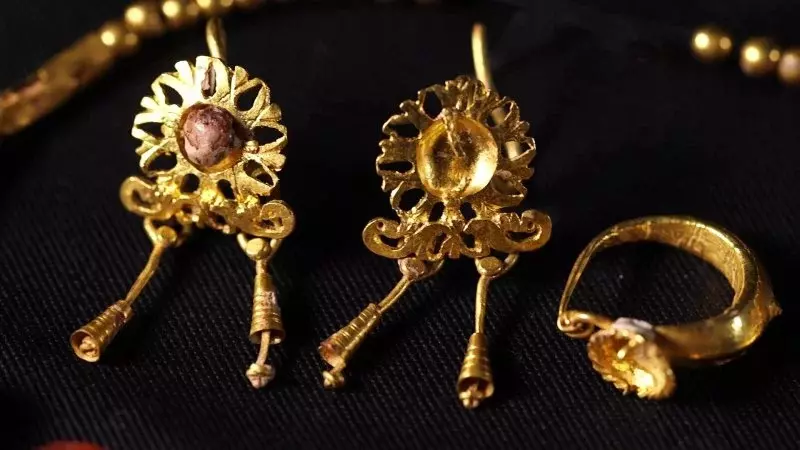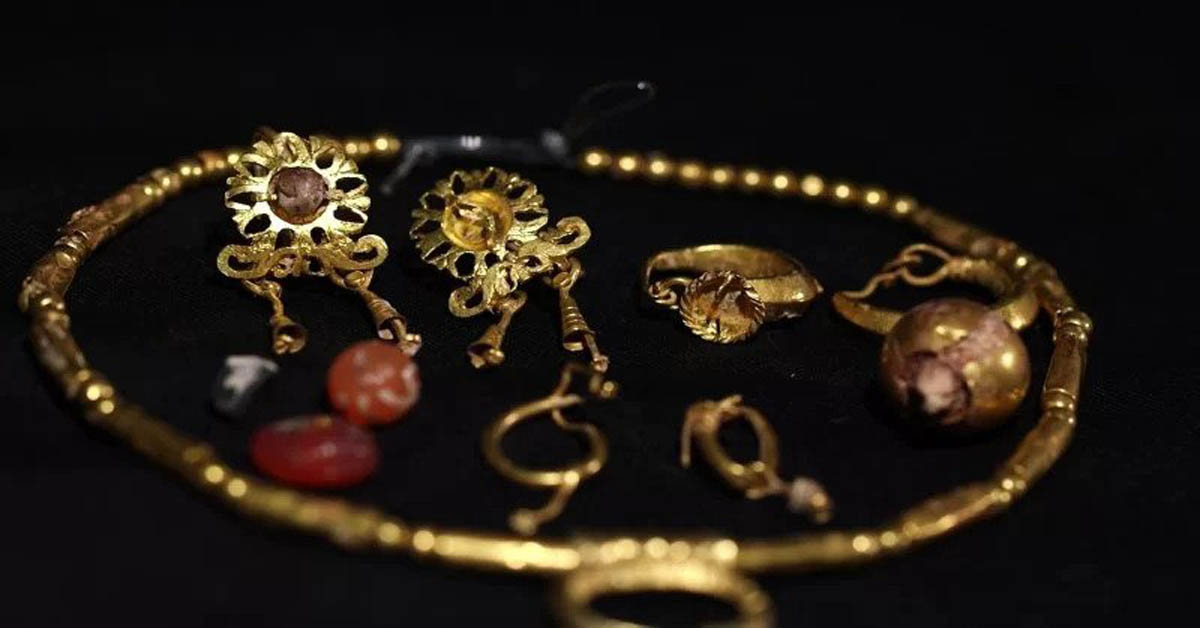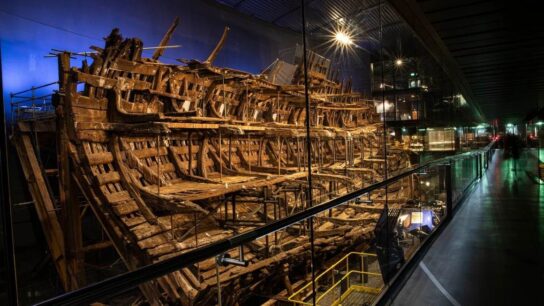Previously Hidden Jewelry from 1,800-Year-Old Burial Cave Displayed at Archaeological Congress
Previously undisplayed jewelry from a 1,800-year-old burial cave of a young girl was exhibited at Monday’s 48th Archaeological Congress.
The conference is taking place for the first time at the Israel Antiquities Authority’s new Jerusalem Campus for the Archaeology of Israel.

One of the jewelry items is associated with the Roman moon goddess Luna. An amulet to ward off the evil eye, it accompanied girls through their lifetimes, and after their deaths would be buried with them to protect them in the afterlife, the research team said.
The pieces were discovered over 50 years ago, in 1971, in a lead coffin at Mount Scopus, as part of an excavation by the late archaeologist Yael Adler, according to a press release by the IAA.
The findings include golden earrings, a hairpin, a gold pendant and gold beads, carnelian beads and a glass bead.
The coffin came from the grave of a young girl who lived in the Roman period, when Jerusalem was known as Aelia Capitolina.
Such items of jewelry are known from all over the late Roman world, and the findings reflect the culture of the new Roman immigrants to Jerusalem at that time, according to the IAA.
However, despite their discovery over 50 years ago, the findings were not previously publicized or made visible to the public.
The items were recently re-located in the context of a wider project spearheaded by the IAA’s Dr. Ayelet Dayan that is aimed at publishing reports from older excavations that had not been fully published previously, the IAA said.
“The location of the original reports that gathered dust over the years in the Israel Antiquities Authority archives, and physically tracing the whereabouts of the items themselves, has shed light on long-forgotten treasures,” said Dayan, head of the Archaeological Research Department at the IAA.
“The beautiful jewelry that we researched is an example of such treasures,” she noted.
Research on the jewelry from the Mount Scopus coffin was conducted by Dayan, Ayelet Gruber and Dr. Yuval Baruch of the Israel Antiquities Authority.

The IAA statement quoted its director Eli Escusido, saying: “The interring of the jewelry together with the young girl is touching.
One can imagine that the parents or relatives parted from the girl, either adorned with the jewelry, or possibly lying by her side, and thinking of the protection that the jewelry provided in the world to come.”
The renewed research has led to the outstanding findings being presented to the public Monday, at the 48th Archaeological conference in Jerusalem, held by the Israel Antiquities Authority, the Israel Exploration Society and the Israel Archaeological Association.




